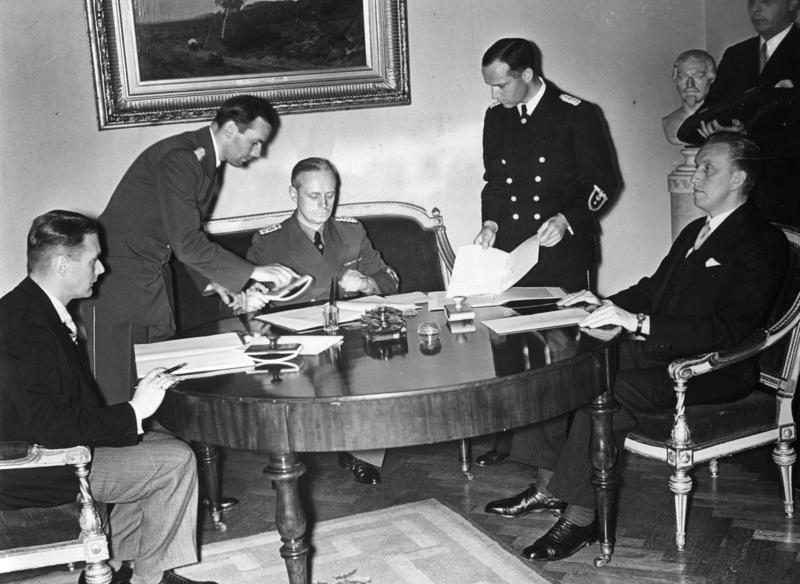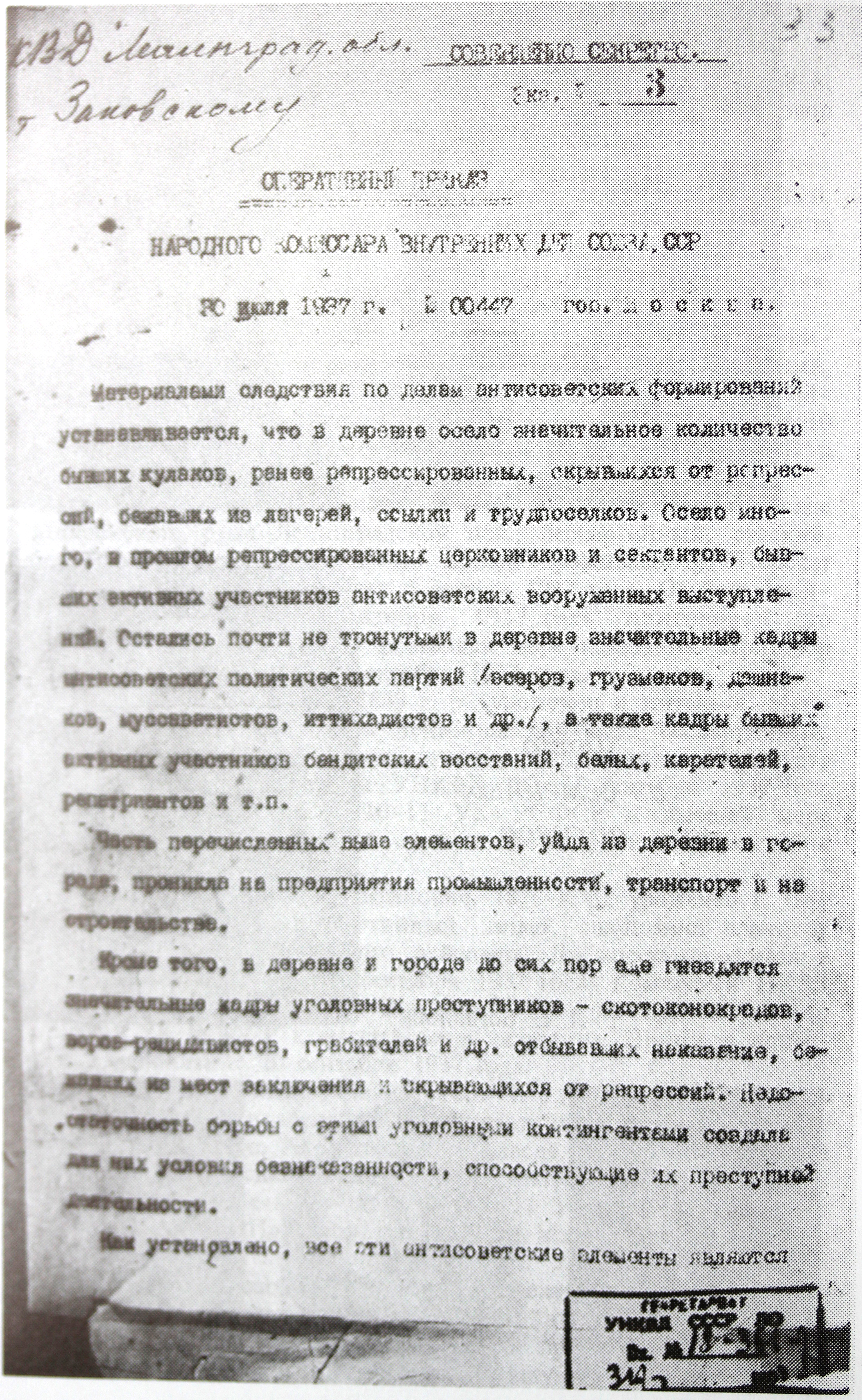|
Jānis Kalnbērziņš
Jānis Kalnbērziņš (17 September 1893 – 4 February 1986) was a Latvian Soviet politician and statesman who was the first secretary of the Communist Party of Latvia and the first de facto leader of the Latvian Soviet Socialist Republic. Biography Born in to a working-class family in Katlakalns Parish (now Ķekava Municipality) in the Governorate of Livonia, Kalnbērziņš joined the Bolshevik Party in April 1917. After the defeat of the Latvian Socialist Soviet Republic, he enlisted in the ranks of the Red Latvian Riflemen and fought against the white forces during the Russian Civil War in the Southern Front. From 1925 he was active in the underground Communist movement of Latvia but returned to the RSFSR in 1928. He graduated from the Communist University of the National Minorities of the West in 1931 and from the Institute of Red Professors in 1933. Kalnbērziņš continued underground party work in Latvia. His wife was arrested in 1937 during the Great Purge and his c ... [...More Info...] [...Related Items...] OR: [Wikipedia] [Google] [Baidu] |
Communist Party Of Latvia
The Communist Party of Latvia ( lv, Latvijas Komunistiskā partija, LKP) was a political party in Latvia. History Latvian Social-Democracy prior to 1919 The party was founded at a congress in June 1904. Initially the party was known as the Latvian Social Democratic Workers' Party (LSDSP). During its second party congress in 1905 it adopted the programme of the Russian Social Democratic Labour Party (RSDLP) as its own. At the Fourth Congress of the RSDLP in 1906, the LSDSP entered the RSDLP as a territorial organisation, and after the congress its name was changed Social-Democracy of the Latvian Territory. The party held its fourth congress in Brussels January 26 to February 8, 1914. In May 1918 Latvian Social Democratic Workers' Party was founded by the Menshevik elements who had been expelled from the LSD. Rule in Soviet Latvia, 1919–1920 The party briefly governed the Latvian Socialist Soviet Republic in 1919; and changed its name to the Communist Party of Latvia in March ... [...More Info...] [...Related Items...] OR: [Wikipedia] [Google] [Baidu] |
Supreme Soviet Of The Latvian Soviet Socialist Republic
The Supreme Soviet of the Latvian SSR ( Latvian: ''Latvijas PSR Augstākā Padome''; Russian: Верховный Совет Латвийской ССР, ''Verkhovnyy Sovet Latvyyskoy SSR'') was the supreme soviet (main legislative institution) of the Latvian SSR, one of the union republics of the Soviet Union. The Supreme Soviet of the Latvian SSR was established in 1940 and finally disbanded in 1990 and was briefly succeeded by the Supreme Council of the Republic of Latvia. According to the 1978 Constitution of the Latvian SSR, representatives could serve an unlimited amount of 5-year terms. The Supreme Soviet consisted of 325 deputies before its dissolution. Organization The structure and functions of the Supreme Soviet of the Latvian SSR were copied from the Supreme Soviet of the Soviet Union. The sessions of the Supreme Soviet lasted only several days twice a year and decisions were made unanimously and without much discussion. Elections for the Supreme Soviet were ... [...More Info...] [...Related Items...] OR: [Wikipedia] [Google] [Baidu] |
Presidium Of The Supreme Soviet
The Presidium of the Supreme Soviet (russian: Президиум Верховного Совета, Prezidium Verkhovnogo Soveta) was a body of state power in the Union of Soviet Socialist Republics (USSR).The Presidium of the Supreme Council of the USSR (ПРЕЗИДИУМ ВЕРХОВНОГО СОВЕТА СССР) . The presidium was elected by joint session of both houses of the |
Supreme Soviet Of The Soviet Union
The Supreme Soviet of the Union of Soviet Socialist Republics ( rus, Верховный Совет Союза Советских Социалистических Республик, r=Verkhovnyy Sovet Soyuza Sovetskikh Sotsialisticheskikh Respublik) was, beginning in 1936, the most authoritative legislative body of the Soviet Union, Union of Soviet Socialist Republics (USSR), and the only one with the power to approve Constitution of the Soviet Union, constitutional amendments. Prior to 1936, the Congress of Soviets of the Soviet Union, Congress of Soviets was the supreme legislative body. During 1989–1991 Congress of People's Deputies of the Soviet Union, a similar, but not identical structure was the supreme legislative body. The Supreme Soviet elected the USSR's Head of state#Multiple or collective heads of state, collective head of state, the Presidium of the Supreme Soviet, Presidium; and appointed the Council of Ministers of the Soviet Union, Council of Ministers, the Supre ... [...More Info...] [...Related Items...] OR: [Wikipedia] [Google] [Baidu] |
Politburo Of The Communist Party Of The Soviet Union
The Political Bureau of the Central Committee of the Communist Party of the Soviet Union (, abbreviated: ), or Politburo ( rus, Политбюро, p=pəlʲɪtbʲʊˈro) was the highest policy-making authority within the Communist Party of the Soviet Union. It was founded in October 1917, and refounded in March 1919, at the 8th Congress of the Bolshevik Party. It was known as the Presidium from 1952 to 1966. The existence of the Politburo ended in 1991 upon the breakup of the Soviet Union. History Background On August 18, 1917, the top Bolshevik leader, Vladimir Lenin, set up a political bureau—known first as Narrow composition, and after October 23, 1917, as Political bureau—specifically to direct the October Revolution, with only seven members (Lenin, Leon Trotsky, Grigory Zinoviev, Lev Kamenev, Joseph Stalin, Grigori Sokolnikov, and Andrei Bubnov), but this precursor did not outlast the event; the Central Committee continued with the political functions. However, due ... [...More Info...] [...Related Items...] OR: [Wikipedia] [Google] [Baidu] |
Central Committee Of The Communist Party Of The Soviet Union
The Central Committee of the Communist Party of the Soviet Union, – TsK KPSS was the executive leadership of the Communist Party of the Soviet Union, acting between sessions of Congress. According to party statutes, the committee directed all party and governmental activities. Its members were elected by the Party Congress. During Vladimir Lenin's leadership of the Communist Party, the Central Committee functioned as the highest party authority between Congresses. However, in the following decades the ''de facto'' most powerful decision-making body would oscillate back and forth between the Central Committee and the Political Bureau or Politburo (and during Joseph Stalin, the Secretariat). Some committee delegates objected to the re-establishment of the Politburo in 1919, and in response, the Politburo became organizationally responsible to the Central Committee. Subsequently, the Central Committee members could participate in Politburo sessions with a consultative voic ... [...More Info...] [...Related Items...] OR: [Wikipedia] [Google] [Baidu] |
World War II
World War II or the Second World War, often abbreviated as WWII or WW2, was a world war that lasted from 1939 to 1945. It involved the vast majority of the world's countries—including all of the great powers—forming two opposing military alliances: the Allies and the Axis powers. World War II was a total war that directly involved more than 100 million personnel from more than 30 countries. The major participants in the war threw their entire economic, industrial, and scientific capabilities behind the war effort, blurring the distinction between civilian and military resources. Aircraft played a major role in the conflict, enabling the strategic bombing of population centres and deploying the only two nuclear weapons ever used in war. World War II was by far the deadliest conflict in human history; it resulted in 70 to 85 million fatalities, mostly among civilians. Tens of millions died due to genocides (including the Holocaust), starvation, ma ... [...More Info...] [...Related Items...] OR: [Wikipedia] [Google] [Baidu] |
Soviet Occupation Of Latvia In 1940
The Soviet occupation of Latvia in 1940 refers to the military occupation of the Republic of Latvia by the Soviet Union under the provisions of the 1939 Molotov–Ribbentrop Pact with Nazi Germany and its Secret Additional Protocol signed in August 1939. The occupation took place according to the European Court of Human Rights,European Court of Human Rights cases on Occupation of Baltic States the Government of Latvia,The Occupation of Latvia at Ministry of Foreign Affairs of the Republic of Latvia the , [...More Info...] [...Related Items...] OR: [Wikipedia] [Google] [Baidu] |
Great Purge
The Great Purge or the Great Terror (russian: Большой террор), also known as the Year of '37 (russian: 37-й год, translit=Tridtsat sedmoi god, label=none) and the Yezhovshchina ('period of Nikolay Yezhov, Yezhov'), was General Secretary of the Communist Party of the Soviet Union, Soviet General Secretary Joseph Stalin's campaign to solidify his power over the party and the state; the Purge, purges were also designed to remove the remaining influence of Leon Trotsky as well as other prominent political rivals within the party. It occurred from August 1936 to March 1938. Following the Death and state funeral of Vladimir Lenin, death of Vladimir Lenin in 1924 a power vacuum opened in the Communist Party of the Soviet Union, Communist Party. Various established figures in Lenin's government attempted to succeed him. Joseph Stalin, the party's General Secretary, outmaneuvered political opponents and ultimately gained control of the Communist Party by 1928. Initially ... [...More Info...] [...Related Items...] OR: [Wikipedia] [Google] [Baidu] |
Institute Of Red Professors
An institute is an organisational body created for a certain purpose. They are often research organisations (research institutes) created to do research on specific topics, or can also be a professional body. In some countries, institutes can be part of a university or other institutions of higher education, either as a group of departments or an autonomous educational institution without a traditional university status such as a "university institute" (see Institute of Technology). In some countries, such as South Korea and India, private schools are sometimes referred to as institutes, and in Spain, secondary schools are referred to as institutes. Historically, in some countries institutes were educational units imparting vocational training and often incorporating libraries, also known as mechanics' institutes. The word "institute" comes from a Latin word ''institutum'' meaning "facility" or "habit"; from ''instituere'' meaning "build", "create", "raise" or "educate". ... [...More Info...] [...Related Items...] OR: [Wikipedia] [Google] [Baidu] |
Russian Soviet Federative Socialist Republic
The Russian Soviet Federative Socialist Republic, Russian SFSR or RSFSR ( rus, Российская Советская Федеративная Социалистическая Республика, Rossíyskaya Sovétskaya Federatívnaya Socialistíčeskaya Respúblika, rɐˈsʲijskəjə sɐˈvʲetskəjə fʲɪdʲɪrɐˈtʲivnəjə sətsɨəlʲɪˈsʲtʲitɕɪskəjə rʲɪˈspublʲɪkə, Ru-Российская Советская Федеративная Социалистическая Республика.ogg), previously known as the Russian Soviet Republic and the Russian Socialist Federative Soviet Republic as well as being unofficially known as Soviet Russia,Declaration of Rights of the laboring and exploited people, article I. the Russian Federation or simply Russia, was an Independence, independent Federalism, federal socialist state from 1917 to 1922, and afterwards the largest and most populous of the Republics of the Soviet Union, Soviet socialist republics of the So ... [...More Info...] [...Related Items...] OR: [Wikipedia] [Google] [Baidu] |






